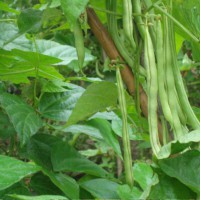Kidney bean is an edible legume plant. The scientific name of kidney bean is commonly known as the second season bean or string bean. The tender pods or seeds can be used as fresh vegetables, can also be processed into cans, pickled, frozen and dried. It is a plant belonging to the genus Phaseolus of the Leguminous family of the Rosales.
Racemes axillary, butterfly-shaped flowers. Corolla is white, yellow, lavender or purple. Self-pollination, a few can cross-pollinate. Each inflorescence has a few to more than 10 flowers, usually 2 to 6 pods.
Kidney beans are suitable for planting in temperate and tropical high-altitude areas, and are more resistant to cold and light. Phaseolus vulgaris is a temperature-loving plant. The suitable temperature for growth is 15-25℃, and the suitable temperature for flowering and pod formation is 20-25℃. Low temperature below 10℃ or high temperature above 30℃ will affect growth and normal pollination and pod formation.
Kidney beans can be eaten in many ways, such as stir-fried, stewed, pickled, etc. Dry stir-fried kidney beans, eggplant beans, kidney bean stewed potatoes, etc. are common practices. They can also be made into sweet beans, salted beans, and kidney bean rice.










